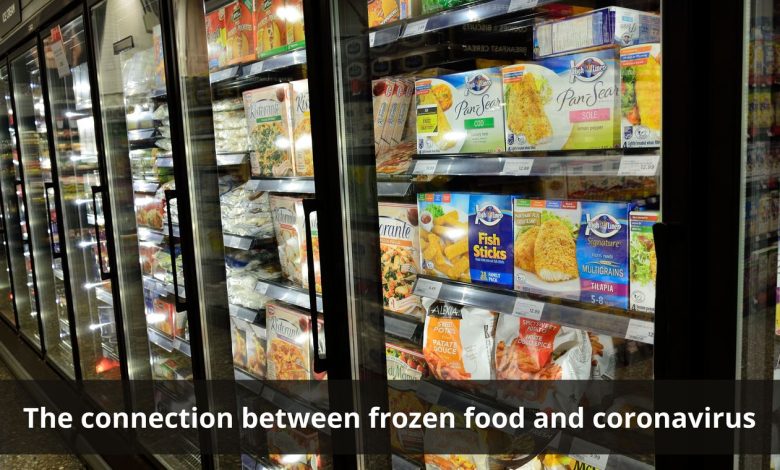
In this growing modern world, frozen food is among the most adopted things for daily use. The growing urbanization has increased the demand for these products. Moreover, busy schedules and hectic lifestyle has changed the entire outlook of food consumption.
People prefer packed items because they are ready to be used and save time. The adoption of these products is expected to expand in the future due to their innumerable benefits.
Benefits
Fruits and vegetables are selected at their height of ripeness and frozen within hours, preserving nutrients and flavor. Fresh foods can easily lose vitamins and minerals over time.
Frozen fruit hold nutrition for a long time as the vitamins and minerals in frozen meals are generally preserved, and the carbohydrate, protein, and fat composition is unaffected. Frozen whole grains, fruits, vegetables, and dairy products are quick and economical to maintain a healthy diet.
These food items can be advantageous for people who have limited kitchen space or who want to save time. According to Astute Analytica, the global frozen food market is forecast to grow at a compound annual growth rate of more than 4% during the forecast period from 2021-2027.
The History: It all began in 1917
Beginning
The new era of frozen food began back in 1917. Clarence Birdseye saw locals preserving fresh fish and meat by allowing it to freeze quickly in Arctic conditions while fur trading in Labrador, Canada.
He discovered perfectly preserved fish from a previous excursion due to the cold. Birdseye brought this outstanding idea to the United States, where he worked for years developing the technique for quickly freezing food items at very low temperatures. In addition, he acknowledged that the little ice crystals do not destroy food cells. Thus, he began working on the method, and the rest is history.
Rising popularity
These products quickly became a public demand during 1980. Shopkeepers began offering seasonal foods all the year. Healthy eating emerged as brands continued to innovate with ready meals backed by consumer advertising.
Findus, a frozen food brand, introduced Lean Cuisine, which is calorie-counted. McCain, a renowned brand, began offering Sunflower Oil to its pioneering Oven Chips in 1988. The era of these items continued growing until 2010.
Concerns about Nutritional Quality
Before that, the nutritional quality of these food items was the main factor driving their popularity. However, after 2010, misconceptions became a significant challenge declining product use.
Several stories about frozen food have been exposed, with independent research highlighting their benefits in terms of nutrition, cost, quality, and sustainability.
The emergence of #PowerofFrozen
Iceland food introduced a campaign named #PowerofFrozen to unveil the benefits of the products. The campaign was unveiled to spread awareness regarding the health benefits of frozen items along with the high quality and cost-effectiveness related to their adoption.
However, people are still concerned about preservatives and the amount of fat these food items contain. According to the article published by Entertainment times, frozen food increase the risk of diabetes elevates blood pressure and increases the chances of pancreatic cancer.
The link between COVID-19 and Frozen food
These food products are causing a dilemma in the minds of people. The sudden onset of the pandemic created considerable havoc in the lives of people. There was a significant dilemma in everyone’s mind about their choices.
On the contrary, various reports suggest that the adoption of frozen products significantly increased as people preferred contactless solutions in their daily lives.
The World Health Organization made a statement in February 2021 during a press conference regarding the spread of coronavirus through frozen food.
Peter Ben Embarek, a food scientist, traveled to China with the World Health Organization team to figure out the origin of the coronavirus pandemic. The scientist mentioned that the virus easily survives in cold conditions. Moreover, the primary outbreak of the COVID-19 pandemic may have sparked through the frozen meat.
According to the article published by ET Health World, packaging became a significant threat in the market growth. In various parts of China, companies started offering a product with a sticker stating virus-free.
Experts also suggested that the Covid-19 virus can survive on cardboard and plastic sheets. However, the severity of the risk is still unclear.
Halt on Import-Export Activities
In China:
In June 2021, China halted the import of frozen fish goods from at least 19 countries, including six Indian marine export enterprises. China’s customs officials claimed to have found signs of COVID-19 on the shipping container that led to the ban.
In Cambodia :
CAMBODIA also imposed a ban on frozen goods in May 2021 to avoid the risk of infection. The authorities imposed a ban on the import of frozen products from India. Later, in June 2021, the government lifted the ban and introduced temporary measures to avoid further risk.
The authorities demanded supplementary certificates or confirmation letters from the government declaring imports of frozen meats and other “high-risk” frozen commodities to be free of the coronavirus.
Moreover, they also announced the further test of the samples needed before they can gain customs clearance for entry into the nation. The Institut Pasteur du Cambodge would check the samples of the commodities.
Read about Cloud Kitchen: The New Normal